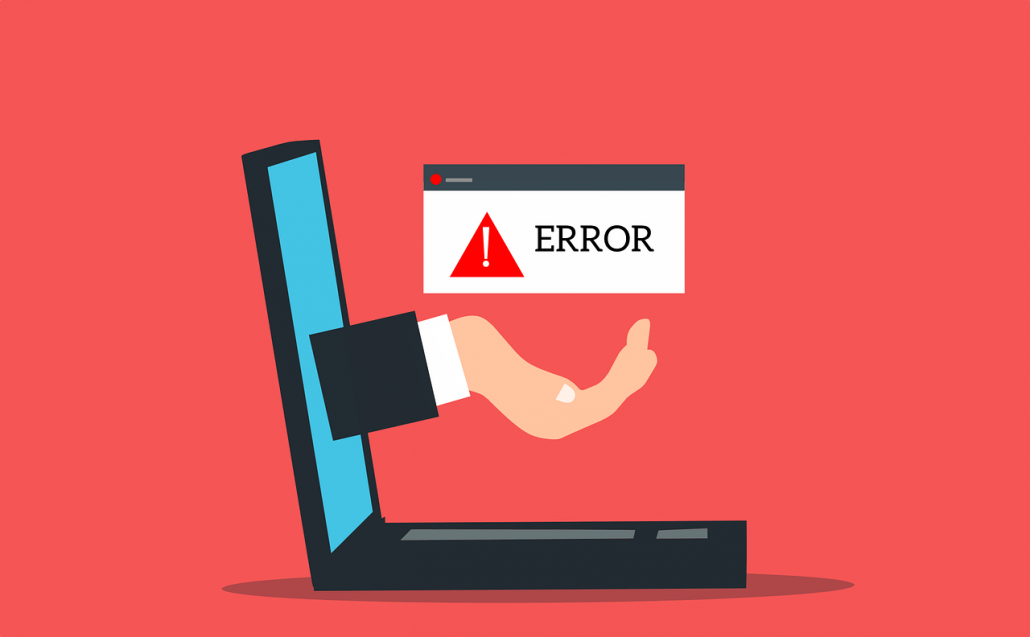The demand for outsourced IT labor is at an all-time high and is expected to grow over the coming years. According to Statista, the IT outsourcing market is projected to reach about $550 billion by 2026, registering an 8.8 percent year-over-year growth between 2022 and 2026. Application outsourcing is a considerable segment of the IT services industry and a big part of this growth.
Clearly, more and more businesses are choosing to outsource web, app, and software development overseas. And it’s a sound choice too because outsourcing is a convenient way to get a job done quickly and efficiently. However, outsourcing can be risky and costly if done recklessly. Here are 10 common mistakes to avoid when outsourcing development overseas.
1. Unclear requirements and vision
Do not outsource any web or software development project before taking some time to list down every little detail about the project. You have to be very specific about what you need. Begin by analyzing the problem you’re trying to solve with the new app. Then identify all the possible digital features and functions that would make ideal solutions for the problem.
Requirement discovery is the first critical stage of any software development lifecycle and project management strategy. Understanding the requirements and how the system will fit into the business gives you a clear vision for the project. More importantly, you should communicate all the project requirements to the outsourced developers upfront. System requirements sit at the core of the development process. So, you must get them right and relay them to the developers at the very start of the project. Things may get messy if you have to keep changing the course of the project mid-development. You might even end up with an app, software, or website that doesn’t fit the intended purpose.
2. Communication breakdowns
Communication is crucial when working with remote, outsourced developers. Good communication fosters mutual understanding and productive work relationships. You, of course, have to discuss your requirements with the developers so they can understand the project’s scope and determine its feasibility. But that’s only the first of many engagements.
It’s essential to maintain regular two-way communications with the developers to keep tabs on progress and ensure you’re both on the same page. Ideally, you should schedule weekly check-ins through virtual meetings, voice calls, or update reports.
Remember to include a tech-savvy associate in such meetings to bridge any knowledge gaps if you’re unfamiliar with technical development concepts or jargon.
3. Ignoring cultural differences
Offshore software development is the go-to outsourcing model for many companies. But this approach means overcoming considerable cultural and language barriers and wide time zone gaps. A huge cultural difference can heavily impact a professional work relationship. Moreover, language and cultural barriers can hinder communications, making it hard to establish a solid connection in the first place.
Nearshoring is the ideal compromise between offshoring and onshoring. It’s a great way to get highly skilled developers at a reasonably low price within your geographical and cultural neighborhood. For instance, Argentina is a prime nearshore software development destination for American companies. You never have to worry about crippling cultural, time zone, and language differences when outsourcing a project to the vast Argentine talent pool. Consider outsourcing closer to home; it takes less effort to find the right team and get the ball rolling.
4. Lacking flexibility
Outsourced or not, a good developer always analyzes the feasibility of a project’s requirements before working on it. This analysis determines the practical requirements that can be translated into digital functions and features. In other words, there’s a chance that the developer may dismiss some of the requirements or suggest a better approach to solving a particular problem.
Such adjustments often serve your best interest and could save you a lot of money, time, and effort. So, keep an open mind when outsourcing your project. You might have to change paths and tactics to get to the solution you’re looking for.
5. One-sided commitment
Developers may do all the designing and coding, but building software is really a collaborative effort between the client and the developer. You can’t just throw a project over the wall and expect good results. You have to be invested and committed to the development process, just as much as the developer. As the client, you’ll also have a fair share of crucial responsibilities.
For instance, it’s your job to check in on the developers, take care of any paperwork, approve deliverables, and ensure everything stays on the right track. Your direct involvement in the project can help streamline development by clearing obstacles, preventing delays, improving results, and motivating the team. That spirit of commitment may also rub off on the developers.
6. Micromanaging
It’s one thing to be involved in a project and another to be “too” involved. You don’t have to follow up on every little thing the developers do. There should be a clear managerial boundary, allowing the developers enough breathing room to do their job. Otherwise, the outsourced team might feel suffocated in their own space.
Manage the project closely, but do so with some moderation. The important thing is to focus on outcomes and not the nitty-gritty of how they came about. Micromanaging can be easily avoided by establishing clear roles at the start of the project. This should set your level of control over how the developers work. Besides, you don’t really have to supervise outsourced developers; it’s one of the perks of outsourcing software development in the first place.
7. Underpricing the project
Pricing a software development project can be a headscratcher, especially if the goal is to cut costs. “You get what you pay for” is an old saying that rings true in this business. Setting the price for an outsourced project is a delicate balancing act between value and quality. You can’t put a low price on a demanding task and expect great results. Although there are rare occasions where the lowest bidder delivers high-quality work, that’s not always the case. Underpriced projects often attract lower-ranking or questionable talent.
So, how do you price an outsourced project to get reasonable value for your money and a quality product at the same time? Unfortunately, there is no golden formula for calculating development costs because every project is unique. But studying the development market in the outsourcing destination and consulting with industry experts can point you in the right direction to optimizing the budget for a particular project.
8. Setting the bar too high
The good thing about outsourcing software development is that you get high-quality results quickly and for a relatively low price. But you shouldn’t pressure the developers to deliver beyond their means. Take scheduling, for example. Project scheduling is a common pain point when outsourcing software development. It’s understandable to want a software, app, or website up and running as quickly as possible. But setting a very narrow development window can result in a half-baked product.
Be realistic about your expectations, whether it’s about meeting deadlines, reaching milestones, or hitting performance figures. We’re not asking that you be lenient, but rather manage your expectations. Fortunately, this is an issue you can sort out during onboarding to avoid disappointments and surprises along the way. Discuss deliverables and metrics of success with the developer to ensure you’re both working toward the same goals at the same pace.
9. Poor team selection
Software development is a broad field. The number of programming languages alone stretches into the hundreds, and there are virtually endless software design and engineering concepts. Many developers specialize in niche areas such as Node.js programming, front-end development, data systems engineering, networking, and web design. So, you must be very keen when selecting developers to ensure you sign the right developer team capable of handling the task at hand.
The first thing you need to do is check the developer’s specialization, qualifications, and experience. Doing so will paint a clear picture of the candidate’s competence. Be sure to assess the candidate’s soft skills and fitness for the job as well. Find out if the individual is a team player, keen on details, and motivated to deliver. Team cohesion and compatibility are two important productivity factors, especially when working with multiple teams simultaneously.
10. Not pursuing long-term collaborations
Many entrepreneurs often take outsourcing as a quick, one-time fix to fill a labor gap. But it can be so much more. Once you’ve established a solid rapport with an outsourced development team, it becomes easier to collaborate on future projects. And the more you work together, the deeper the connection becomes. The team will gradually learn, understand, and respect your organizational culture, work ethics, and the intricate dos and don’ts. Such a relationship can eventually evolve into an invaluable business partnership.
If you expect to keep outsourcing more projects overseas, why not pursue a long-term arrangement with a proven team instead of going through all the hassle of onboarding new developers with each project? You can get so much more value from long-term collaboration than just churning out software products.
Final thoughts
Outsourcing presents several benefits over in-house development. It’s a great way to save money, accelerate time-to-market, augment the internal IT department, and improve labor efficiency. However, you have to get outsourcing exactly right to appreciate these perks. But it’s actually not that hard to outsource. As long as you’re clear on what you want, realistic, flexible, and open to new possibilities, you’ll minimize outsourcing risks and maximize outcomes.
WeDevelop can give you a leg up in outsourcing software development overseas while steering you away from pitfalls and costly mistakes. We are a software development company that also helps businesses hire dedicated teams and augment their staff. Our talent pool is a diverse group of 200+ vetted engineers from all over the globe. We’re here so you don’t have to gamble when outsourcing any development project. Get in touch with us to learn more.










